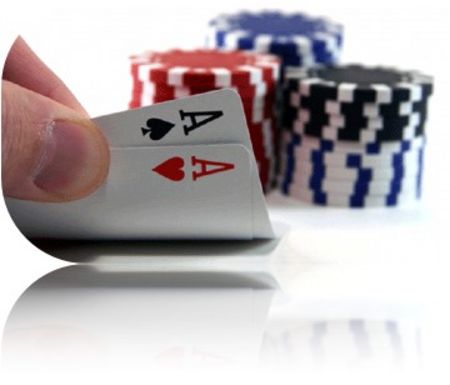Folding to Save Bets

The above section showed that it is often correct to call on the river rather than
losing the entire pot for one more bet; however, sometimes you need to fold to save
bets when it is obvious that you have a losing hand. Many players have a natural
curiosity and want to see their opponent's winning hand just to know how they got
beat. Don't just call because you want to know whether he hit a set or the flush.
Curiosity is a good poker player's worst enemy when it starts costing you a full bet
on the river. Remember, a good player expects to make about one big bet an hour.
If you call on the river one time per hour when you shouldn't, you are wiping out
your entire win rate.
The tricky part is determining when you should fold. Use the same reasoning
presented in the "Don't Fold the Winning Hand" section to determine whether or not
calling is justified. Again, the type of opponent, type of board, and betting
sequences should help you in your decision. If all of these considerations indicate
with a high degree of certainty that your opponent has a better hand, you need to
fold to save that bet; however, always consider the pot odds before deciding.
One important consideration when deciding whether to call or fold is the number of
opponents involved in the hand. The more opponents you are against, the more
likely it is that you need a strong hand to win. This is especially true when there has
been a bet and a call on the river. You must have a much stronger holding calling
the river against two opponents than you would need against only one.
If there were several opponents on the flop or turn with lots of raises, this also
indicates that someone has a strong hand. Also, generally fold against an opponent
who bets out into several players on the river with a scary board. In heads-up
situations, opponents might try a bluff, but against two or more players, bluffing is
not very common on the river.
Let's look at a common example when folding on the river is correct. You hold A ♠
K ♥ in early position and raise. A middle player and the button call while the blinds
fold. The flop is A ♣ 9 ♣ 5 ♦. You bet, the middle player raises, the button calls, and
you reraise with everybody calling. The turn is the 2 ♥. You bet and everybody calls.
The river is the 6 ♣. You bet, the middle player calls, and now the button player
raises. What should you do? The most likely holding for this player is a flush, or
maybe a small chance of either two pair or a set, but in either case you should fold
since| he has at least a pair beat.
Advanced Concept: Whenever the flop is two-suited and there is more than one opponent playing to
the river, there is a decent probability that one of them is on a flush draw. This is especially true
when they couldn't be drawing to overcards or a straight.
In the example above, the button player called a raise preflop and then called a
raise on the flop. What are his likely holdings? A bet and a raise on the flop dearly
indicate that one of his opponents has at least a pair of aces. If the button player
has an ace, the middle player probably has the flush draw. Even if all three players
have an ace, it is doubtful a button player would try a raise on the river with only a
pair of aces against two opponents.
Let's look at another common example. You hold A ♥ A ♠ and raise in early position.
The middle player and button call again. The flop is the A ♣ T ♣ 5 ♣. You bet and both
players call. The turn is the 6 ♥. You are worried about a made flush, but you bet
because you do not want to give a free card. Both opponents call. The river is the
2 ♣. You are beat. You might think, "I can't fold a set of aces," but you can! Save the
bet! If you were heads up, you would need to call against some opponents and fold
against others. Some lone opponents might try a bluff with this scare card, while
others would only bet with the flush. Against two opponents with this type of flop, at
least one of them had a flush draw.
Other examples that might give a strong indication that you are beat are when four
parts to a straight appear or if a card is paired on the river. The previous betting
sequences may indicate that you have the losing hand with these types of boards.
For example, let's say four players call to the river and you were betting on every
street with AK. The board on the river is KT52T and the small blind bets out. A
player betting into three opponents will almost always have trip tens. If he bets into
two opponents, you probably should still fold. If he bets into you heads up, you
might need to call, unless you have a great read on your opponent and know he
would only bet trip tens.
Be sure not to fold a winning hand, but don't make silly calls when you know you
are beat. Save those bets!
NEXT..
Betting or Raising to Gain Bets

